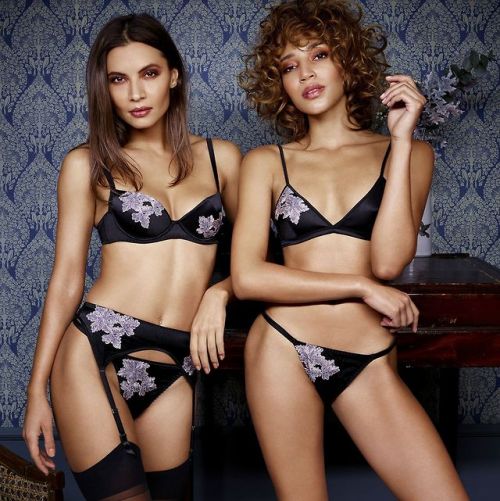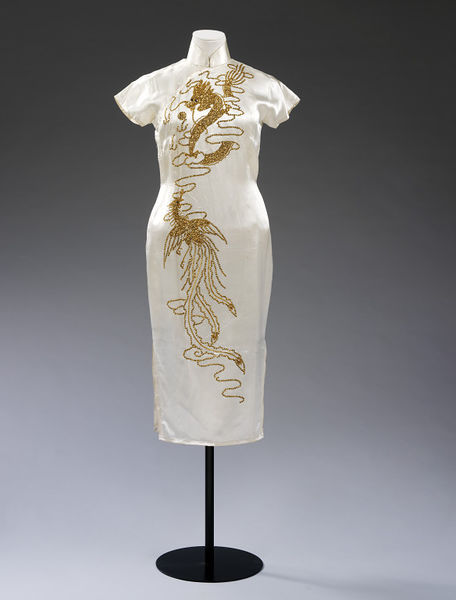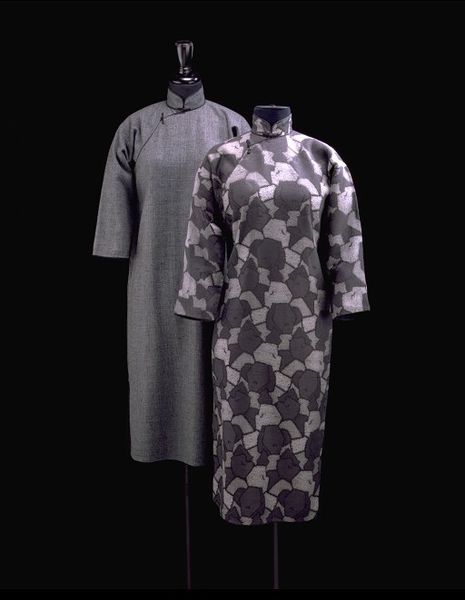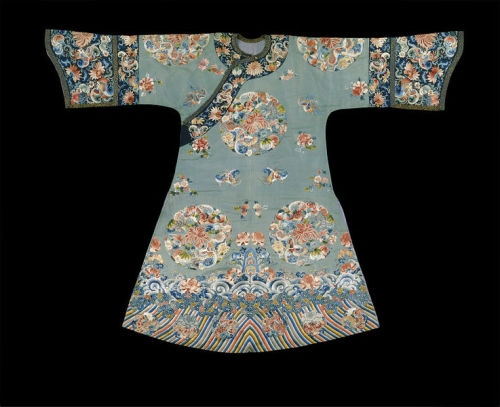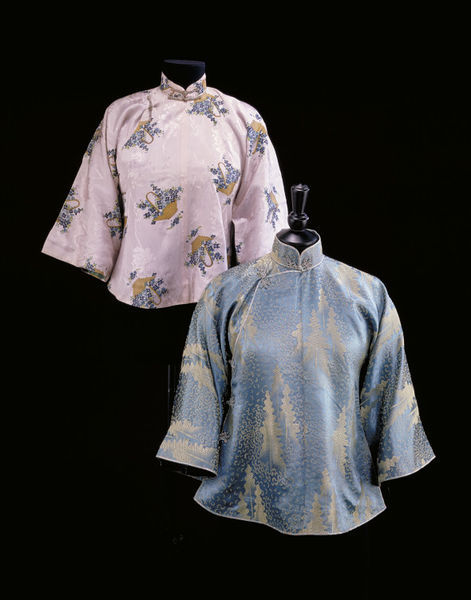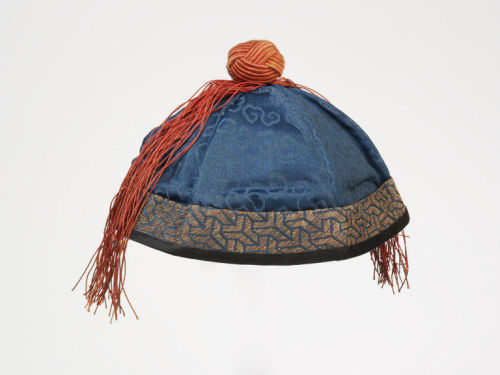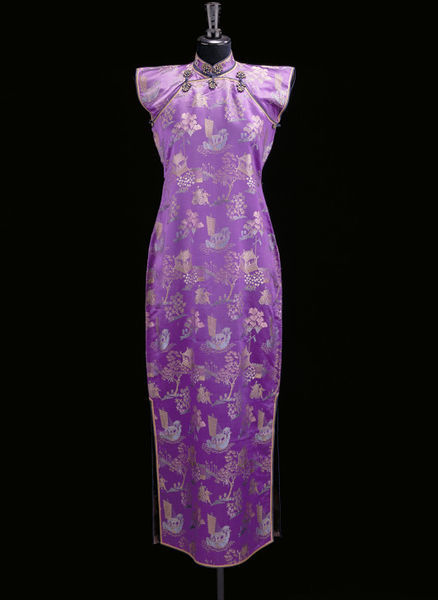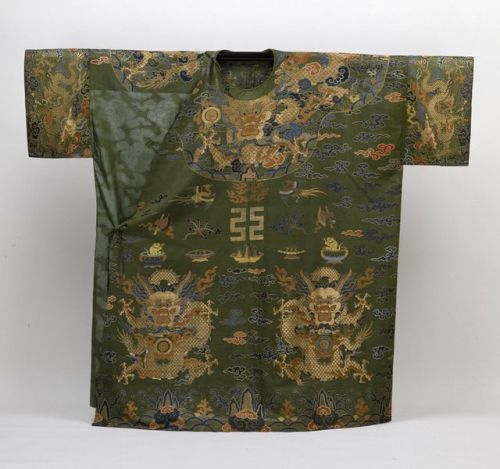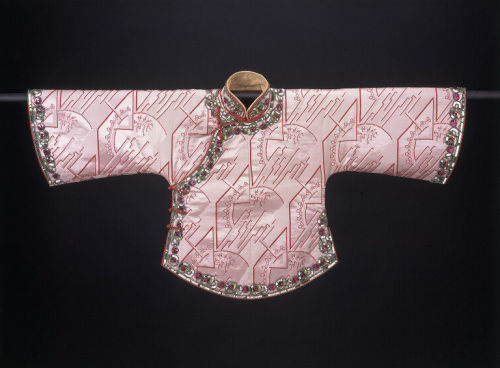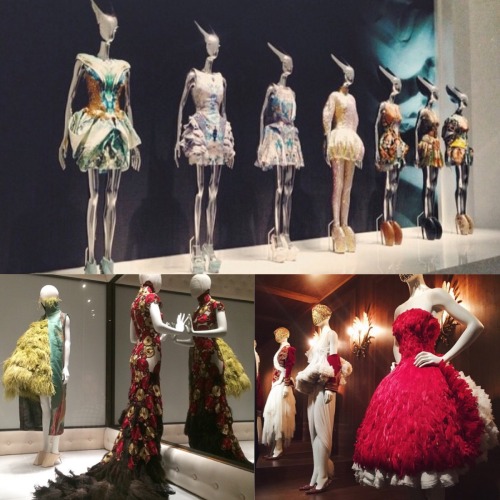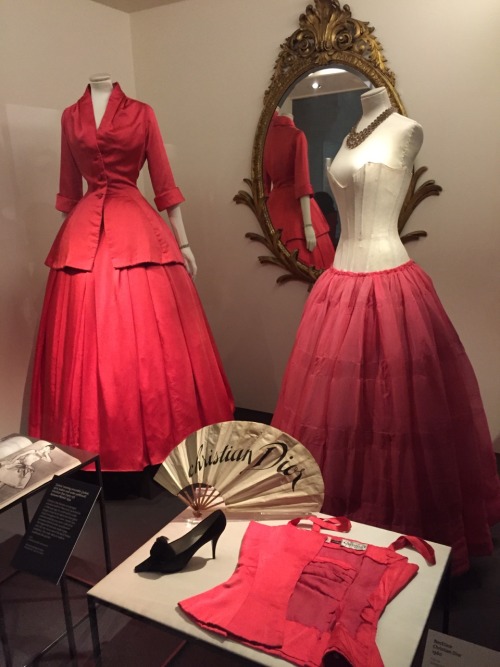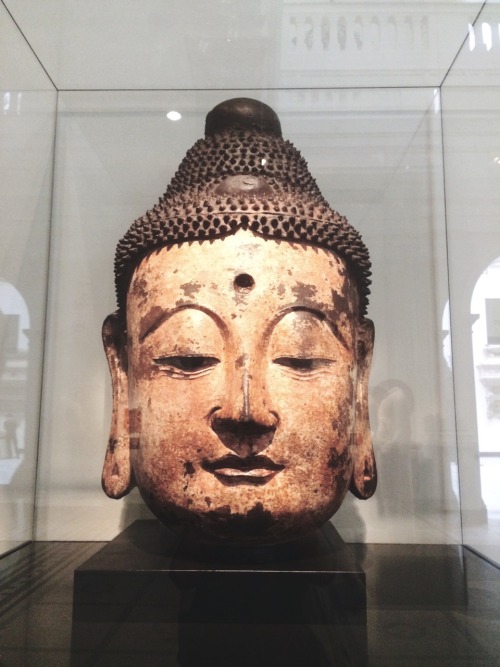#va museum
Han Woman’s Jacket (Informal)
1850-1900
China
Silk velvet, with embroidered edgings on satin ground
Summary: This garment is a three-quarter-length jacket worn by a Chinese woman with a wraparound skirt beneath. The large-scale peony and butterfly design on the velvet part of the coat contrasts with the applied edgings, which are decorated with smaller embroidery motifs in a variety of colours.
Post link
Jifu (Auspicious Robe)
ca. 1821-1850
China
Silk embroidery on twill weave silk
Summary:This type of robe functions as a type of semi-formal court robe for a woman, and the turquoise color suggests this may have been worn by an imperial consort of a lower rank.
Post link
Shawl
1870-1920
Made in China (Probably for sale in Europe)
Embroidered silk crêpe in silks
Summary: This shawl is formed by two triangular pieces of silk, each with a knotted fringe. The wearer can choose the ground colour - red or yellow. In Britain, these fringed shawls were popular from about 1840 to 1910 because they were seen as ‘artistic’ and bohemian rather than as mainstream fashion accessories.
Post link
Jackets
Republic Period (1920s)
Hong Kong, China
V&A Museum
Silk satin ground with self patterned design.
Summary: The qipao was traditionally the costume of the Manchu people, and the style was adopted by Chinese women from the Qing Dynasty. By the twentieth century the shapes and styles of the traditional dress were changing. Neat, slightly waisted jackets paired with above-ankle skirts were prevalent in the 1920s.
Post link
Cap
Qing Dynasty (1875-1911)
China
Woven Silk
Summary: The relative small size of this cap suggests it would have been made for and worn by a boy. Although younger children tended to have fun and colorful hats decorated with images of animals, as they became older it was common practice for children to wear smaller versions of adults’ clothing, as this cap was intended to be.
Headgear were not merely part of a man or boy’s outfit: especially in the northerly parts of China they were also important for keeping the head warm in colder climates.
Post link
Qipao/Cheongsam
20th Century (Probably1960s)
Hong Kong, China
Woven silk
Summary: Woman’s dress (known as a cheongsam in Cantonese or a qipao in Mandarin) made from classic Chinese woven silk with a design of junks and pavilions among traditional trees. It is tailored to accentuate the waist.
The stiffened collar is closed with a triple floret arrangement.
On its own, the qipao is itself a modernised form of the dress worn by Manchu and Han women of the Qing dynasty (1644-1911). During the Republican period (1911-1949), the qipao was promoted as the dress of modern China, identifiably ‘Chinese’ on the one hand, and moving away from 'feudal’ associations with the imperial past.
Post link
Robe
Qing Dynasty (ca. 1790)
China
Brocaded silk damask and metallic thread
V&A Museum
Summary: This robe was made to adorn a statue of the Chinese deity, Guan Di. Guan Di, also known as Guan Yu, was an important General of the Eastern Han and Three Kingdoms era. On this robe we see symbols from the twelve insignia used by royalty (such as the symmetrical fu symbol in the centre of the robe; millet; flames; mountains; axes and pheasants). Since he was considered to be equal to an emperor, it is woven with many of the symbols seen on the emperor’s yellow clothes of the same period.
This robe would have been one of a set of clothes of different colors made for the same statue, to be changed according to seasons.
Post link
Daoist Robe
Qing Dynasty (19th Century)
China
Satin silk with embroidery in silks and gold thread
Summary: The robe would have been worn during a religious ceremony. It is embroidered with Taoist symbols, including the Yin and Yang (T'ai Chi) and the Eight Trigrams (Pa Kua). Most of these Taoist robes are made from full widths of uncut silk with limited seaming, but this one is unusual in having sleeves and side seams.Silk satin embroidered with silk and gold thread.
Post link
Jacket
1920s
Shanghai, China
Woven silk with sequin edging
Summary: This sparkling jacket would have been worn by a fashionable woman in urban China in the 1920s or 1930s, possibly with a matching skirt or else a plain black one. The collar is lined with orange velvet.
Post link
Free Vintage Knitting Patterns
r/knitting - Free Vintage Knitting Patterns
hey I found that the british history museum is sharing a ton of vintage knitting and crochet patterns from the 40s for free!
Despite what the original Reddit post says, this is just the V&A’s collection. If you haven’t checked it out, you should. If you already know that collection by heart, I’ve saved you a couple of click-throughs.
The amazing Alexander McQueen; Savage Beauty exhibition at the Victoria and Albert Museum London. Probably the best fashion exhibition I’ve ever seen. So well put together, I just could not believe the number of garments!! If you’re going to be in London before the 13th of June go and see this exhibition!!
Post link
Beautiful Christian Dior New Look garments at the Victoria & Albert in London. I highly recommend it. Starting next month is an exhibition on the great Alexander McQueen. If you’re in London go and check it out!
Post link

